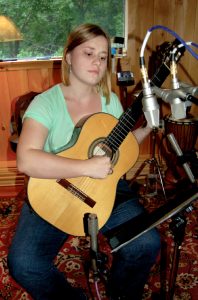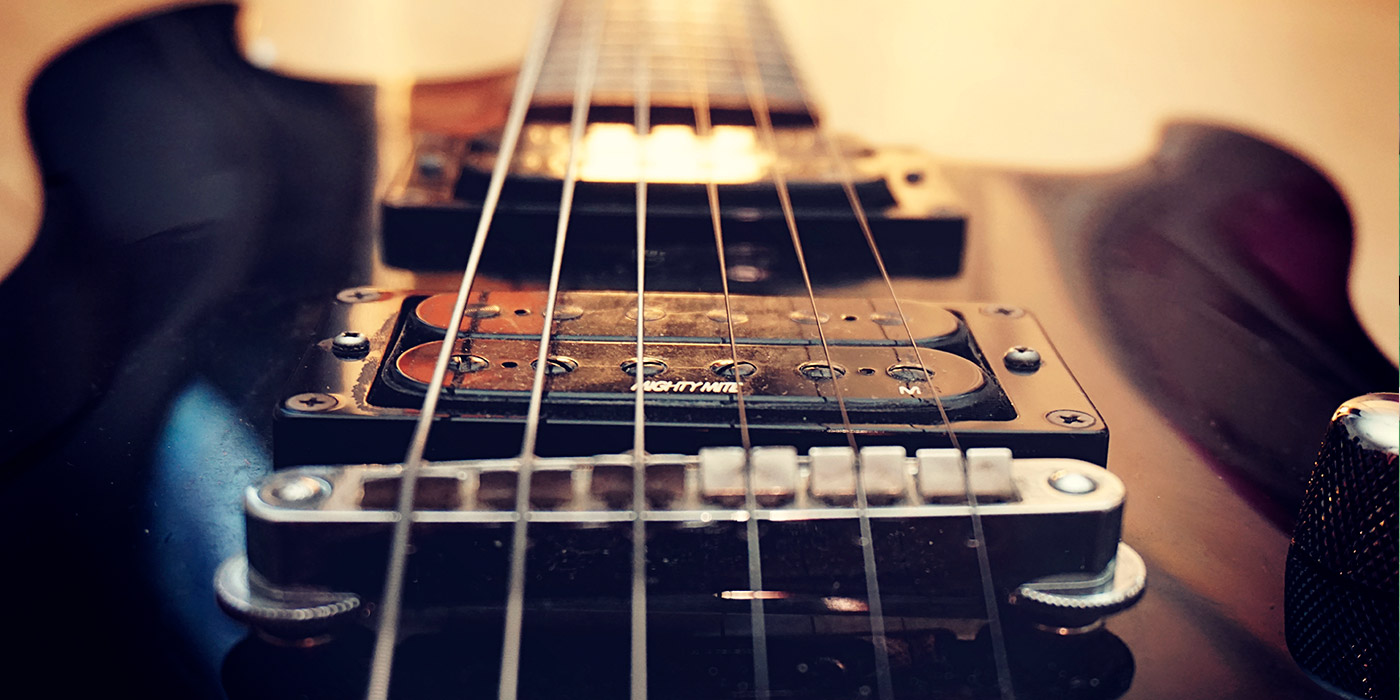A recording engineer to the stars shares his setups for both acoustic and electric tracking
By Scott Petito
Scott Petito is a bassist and producer who has produced and recorded a wide variety of A-list artists, often at his NRS Recording Studio in upstate New York, and frequently adding his bass playing to these projects. What prompted us to pick his brain was the incredible variety of guitar stylists and tones he has recorded. We asked Scott to go into detail about the many aspects of choosing and miking guitars, in a nutshell.—Ed.
Acoustic guitars
Some acoustic guitarists I have recorded include James Taylor, Rory Block, Taj Mahal, Richard Shindell, Arlen Roth, Rick Danko, Happy and Artie Traum, John Sebastian, David Spinozza, Al Pettiway, Tom Paxton, Pete Seeger, Larry Campbell, and hundreds more.
I start by considering the guitar. I prefer small-bodied guitars, 000s etc., especially for finger-picked parts. A good instrument in good shape with the proper strings is the starting place for any great-sounding guitar recording. Larger guitars, miked farther off, sound great for strumming, especially with very thin picks. That gives a nice percussive sound with less fundamentals.

Figure 1. A spaced pair of mics, seen from front and above)
Before you get to choosing mics, first listen to the instrument and its balance in the room. Most guitars have a resonance peak, good or bad. Maybe a bump in the low mids… Find a good spot in the room that helps even the guitar’s response.
Perspective guides my decision: How will the guitar fit into the final arrangement? Solo, small band, focus track, color?
Fingerpicking—I generally close-mike about 1 to 2 feet from the instrument, usually in stereo.
For solo and small ensemble, where the guitar is going to be out front, I like to use a spaced pair at the neck and bridge position. I generally avoid placing mics directly in front of the soundhole, since it’s a lot like blowing over the top of a bottle. See Figure 1.

Figure 2. An XY mic array, seen from front and above
For more rhythm or support tracks I like to use an XY setup (as shown in Figure 2); it gives a more focused image but still in stereo.
For pad-like parts I prefer mono recording, a bit further off the instrument. This is focused but retains a sense of space. Often these types of parts are doubled or tripled and hard-panned in the mix. I also like mono recording for solo single-line parts, again with the emphasis on keeping a focused but well balanced image.
I’ve used tons of mic pairs and combinations. My current favorites for stereo recording are Microtech Gefell UMT 70 S and MT 71 S. The 70 is a bit thicker due to its transformers, which is not always what you want with guitar.
These are small mics but not small-capsule mics. Many people do not like large-capsule mics for guitar recording, and over the years I’ve gone back and forth, but I think these mics give me the best of both worlds.

Figure 3. A multiple-mic classical guitar setup with a Royer ribbon and two Gefell condensers.
For mono recording I prefer a Neumann U 67 or a Gefell UM 900, placed at the neck joint, aimed in towards the sound hole, usually above the body unless the player is a heavy breather!
Other, less pricey mic choices I like include the Audio-Technica AT4050, Shure KSM44, and Blue Dragonfly.
Notice that I have selected mostly multipattern mics. I often use an omni pattern for less proximity effect, especially if the room sounds nice.
Ribbons and acoustics can also be a great choice if paired with a high-gain preamp. I like the Royer R-122, a very quiet ribbon mic, shown in Figure 3 combined with a closely spaced pair of condensers. I often use these in XY stacked on top of each other in a Blumlein array, again avoiding the sound hole, but you need to experiment with positioning. By the way, since all ribbons are naturally figure-8, the resulting pattern is pretty much omni.
My favorite acoustic preamps are the Neve 1073, Great River, Phoenix Audio, and Focusrite 115. If I use any compression during tracking, it tends to be an Empirical Labs Fatso Jr., more for the Warmth function than any actual compression.
Electric guitars
Some electric guitarists I have recorded are John Scofield, Lucky Petersen, Keith Richards, David Spinozza, Arlen Roth, David Torn, Jim Weider, Levon Helm/The Band, John Hall of the band Orleans, Marc Shulman, and a few hundred more!
All the things stated above about the instrument apply to electric guitars as well. You want a good instrument in good shape with fresh strings before you do anything else.
I prefer small amps. Blackface Fender Deluxe amps are my favorites, but some other amps I really like are small old Ampegs, Fender Bassmans, Princetons, and some modern amps like Mesa etc.

Figure 4. Royer ribbon mics, on a single amp (left) and combined with a room mic (right).
Here my approach is simple. After years of using the tried-and-true Shure SM57 on the sweet spot of a speaker cone, I switched about 10 years ago to Royer R-122 and R-121 ribbon mics. A lot of guitarists are leery of change and still look at me sideways when I pull out the Royers, but almost everyone is happy with the results. (By the way, when they’re not, I go with the 57!)
With Royers I find I do not have to get in as close to the grille, although I’m usually within 6 inches. I tend to mike a little off axis of the speaker and at the edge of the speaker cone, but there’s no hard and fast rule here.
I am not afraid to EQ these mics, adding a broad lift from, say, 1.2 kHz upward and making a cut in the lows, shelving between 80 and as high as 150 Hz, depending on the amp. Electric guitars tend to have way more low end than is really needed, especially in the final mix.
I like API preamps for guitar, for their good focus and midrange forwardness, and they’re not too “Hi-fi”. For more lush parts I like Great River preamps more—they are Neve-like, bigger but still with a little dirt…
I like to use room mics, a Neumann U 67 or U 87 several feet back, blended in they can add some nice air and localization. I tend not to record electric guitar with compression.


